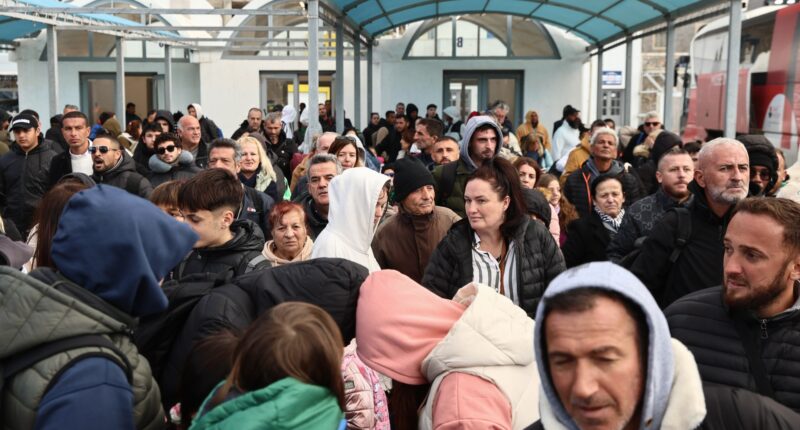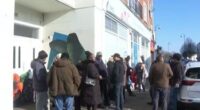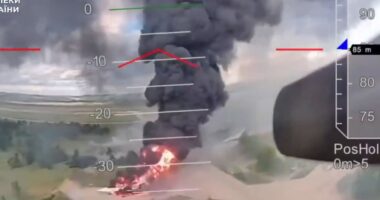SATELLITE- based radar data reveal how the terrifying earthquakes of the past weeks have affected Santorini’s volcano.
The idyllic Greek island has been plunged into a state of emergency as a total of 7,700 tremors have been shaking the isle in the past two weeks.




Just a day after Greek officials declared a state of emergency a new 4.8 magnitude quake hit the area near Amorgos.
It follows a powerful a 4.6-magnitude quake on Thursday evening and a 4.2-magnitude tremor roughly two hours later.
The series of earthquakes have prompted more than 10,000 residents and workers to evacuate.
The consecutive earthquakes have led to a “seismic crisis” that appears to have affected Santorini’s volcano, an expert said.
Latest satellite-based radar measurements have shown an inflation on the volcano since the start of earthquakes ten days ago.
Ta Nea was informed by Michalis Foumelis, an associate professor at the Department of Geology of the Aristotle University of Thessaloniki, that some indications of change in the volcano have been identified in comparison to its previous period of tranquility.
He noted that the findings are not yet conclusive and the observed deformation is still relatively weak.
Santorini is at the risk of even more landslides
Around 7,700 earthquakes have shaken the Santorini-Amorgos seismic zone since January 26.
More than 1,300 tremors were detected on Tuesday with the strongest reaching magnitudes of 4.9 to 5.0.
Greek Prime Minister Kyriakos Mitsotakis arrived to the island today and said Greek authorities are on alert, monitoring increased seismic activity.
He urged the public to remain calm and follow the advice of the civil protection service.
Foumelis reassured the residents of Santorini and the nearby islands currently undergoing testing that the government is fully supportive of them.
“We hope this phenomenon ends quickly and the island fully returns to its normal pace.”
Dr Athanassios Ganas, research director of the National Observatory of Athens, called the crisis “unprecedented” in modern Greek history.
“We are in the middle of a seismic crisis,” he told the BBC.
Santorini’s Thira Municipality confirmed the emergency measures will remain in place until March 3.
The official statement declared a state of emergency to address immediate requirements and manage the repercussions stemming from the seismic events.
Since Sunday, nearly 15,000 people—mostly terrified mothers and children—have fled, while local men have stayed behind to protect homes from potential looters.
“The men have stayed behind to look after everything we own,” Chryssa Pappas previously told The Sun as she waited to board a ferry with her young son and daughter.
“We’re all really scared. Our island is shaking constantly, and no one seems to know what will happen next.”
Police have cordoned off large parts of the island, and fears of a tsunami have prompted residents to build makeshift defences along Monolithos beach.
Authorities have deployed military and fire brigade personnel “for security reasons,” alongside social workers and psychologists to help displaced residents.
Greek seismologist Akis Tselepis warned that the same fault line responsible for the catastrophic 1956 earthquake—which killed 50 people and injured hundreds—has been reactivated.
“The seismic activity is not withdrawing, on the contrary, it is gaining in momentum,” he said.
“The worst-case scenario is that we will again see an earthquake of the same magnitude.”
Meanwhile, Israel has started preparing for a potential tsunami in response to the earthquakes in Santorini, the Times of Israel report.
Earlier this week the Deputy Head of Israel’s National Security Council called an urgent meeting to assess the threat.




















